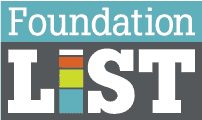U.S. Indigenous Heritage Month is a time for all of us to come together and celebrate the rich tapestry of traditions, languages, customs, and cultures that have been woven by the original peoples of the Americas. Indigenous communities have called these lands home for thousands of years, long before European colonizers arrived on these shores. This month is an opportunity to honor their resilience, wisdom, and profound connection to the land and its ecosystems. It’s also a chance to acknowledge the historical injustices and challenges that Indigenous communities have faced, including forced displacement, discrimination, and cultural suppression.
To truly appreciate the depth and diversity of Indigenous heritage, you can explore a fascinating interactive map that showcases the territories historically inhabited by Indigenous communities. Just enter your address at native-land.ca to see which Indigenous nations, tribes, or bands historically lived in your area.
Learning from the Past: The Legacy of Boarding Schools
This month also serves as a reminder of the painful history that Indigenous communities have endured. In 2021, Secretary of the Interior Deb Haaland, the first U.S. Indigenous cabinet secretary, initiated the Federal Indian Boarding School Initiative to shed light on the legacy of government-funded boarding schools. The initiative aims to raise awareness about the profound impact of these schools on Indigenous communities.
The National Indian Education Policy Center (NIEPC) recently released a report titled “A Broken Promise: The Interior Department’s Failure to Uphold the Trust Responsibility to Native American Boarding Schools.” The report found that the Interior Department has failed to adequately address the legacy of boarding schools, and that survivors of these schools continue to suffer from trauma and its intergenerational effects.
Addressing Wage Disparities: The Ongoing Struggle for Economic Equality
Modern challenges persist, and it’s crucial to address them. According to U.S. Census Bureau data from 2021, Native women were paid only approximately 51% of what non-Hispanic white men earned. This wage gap affects all Native women, including seasonal and part-time workers. You can read more here: Native American Women and the Wage Gap
The Native American Women’s Economic Empowerment (NAWEE) Project is working to address the wage gap and other economic challenges faced by Native American women. The project provides training and resources to help Native women start and run their own businesses.
Celebrating Indigenous Authors: Giving Voice to Diverse Perspectives
Another author to explore is Kali Fajardo-Anstine, whose works like “Sabrina & Corina” and “Woman of Light” center around Indigenous Chicano and Latine characters in the American West. These novels delve into themes of family, friendship, and ancestral power.
For more Indigenous literary treasures, check out the blog post on bookriot.com titled “22 Must-Read… ” and discover a plethora of Indigenous authors and their remarkable written works.
Exploring Indigenous Arts: A Rich Tapestry of Cultural Expression

